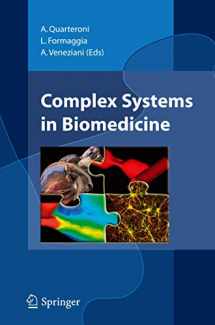
Complex Systems in Biomedicine
Book details
Summary
Description
Mathematicalmodelingofhumanphysiopathologyisatremendouslyambitioustask. It encompasses the modeling of most diverse compartments such as the cardiovas- lar,respiratory,skeletalandnervoussystems,aswellasthemechanicalandbioch- ical interaction between blood ?ow and arterial walls, and electrocardiac processes and electric conduction in biological tissues. Mathematical models can be set up to simulate both vasculogenesis (the aggregation and organization of endothelial cells dispersed in a given environment) and angiogenesis (the formation of new vessels sprouting from an existing vessel) that are relevant to the formation of vascular networks, and in particular to the description of tumor growth. The integration of models aimed at simulating the cooperation and interrelation of different systems is an even more dif?cult task. It calls for the setting up of, for instance, interaction models for the integrated cardio-vascular system and the interplay between the central circulation and peripheral compartments, models for the mid-to-long range cardiovascular adjustments to pathological conditions (e.g., to account for surgical interventions, congenital malformations, or tumor growth), models for integration among circulation, tissue perfusion, biochemical and thermal regulation, models for parameter identi?cation and sensitivity analysis to parameter changes or data uncertainty – and many others.


We would LOVE it if you could help us and other readers by reviewing the book
Book review



